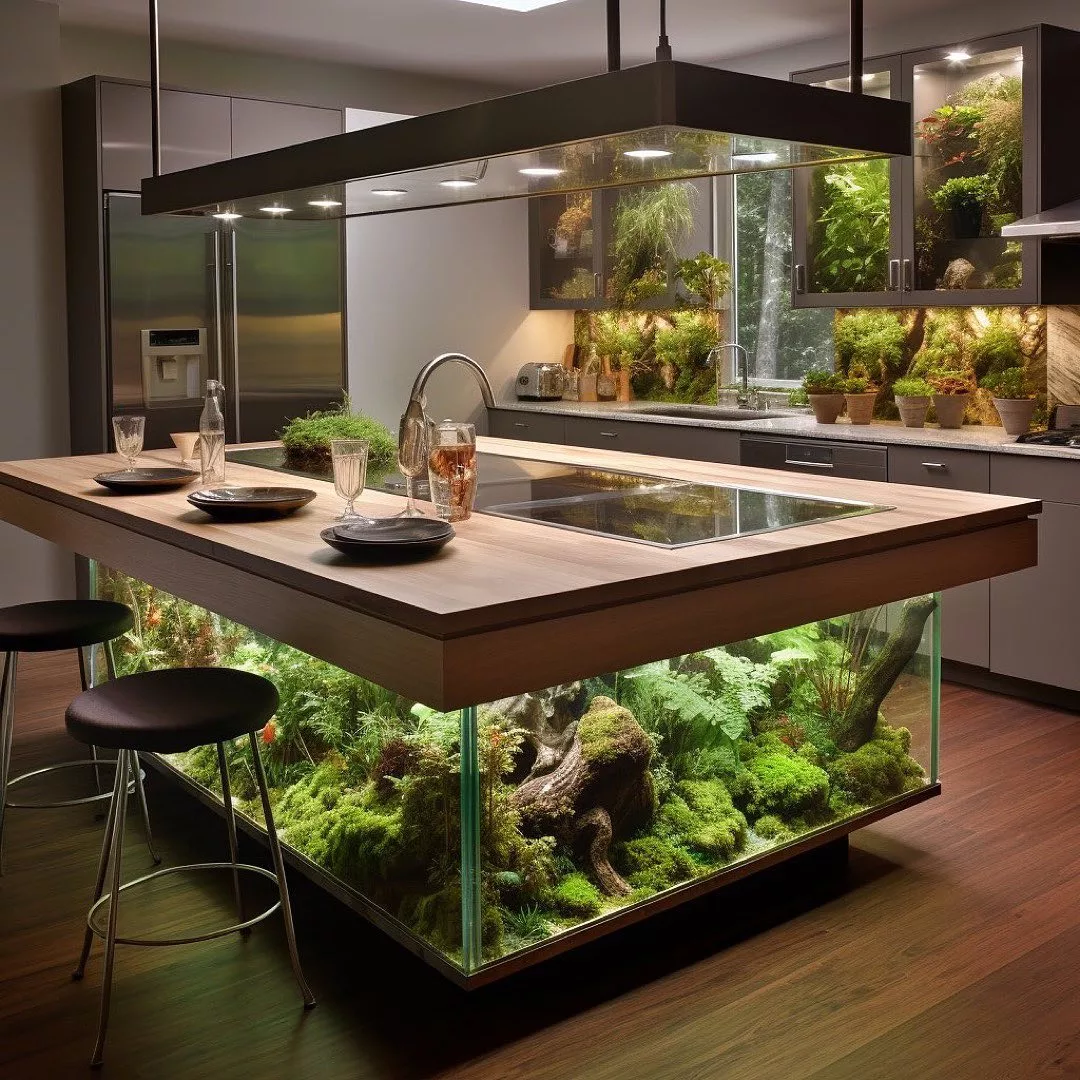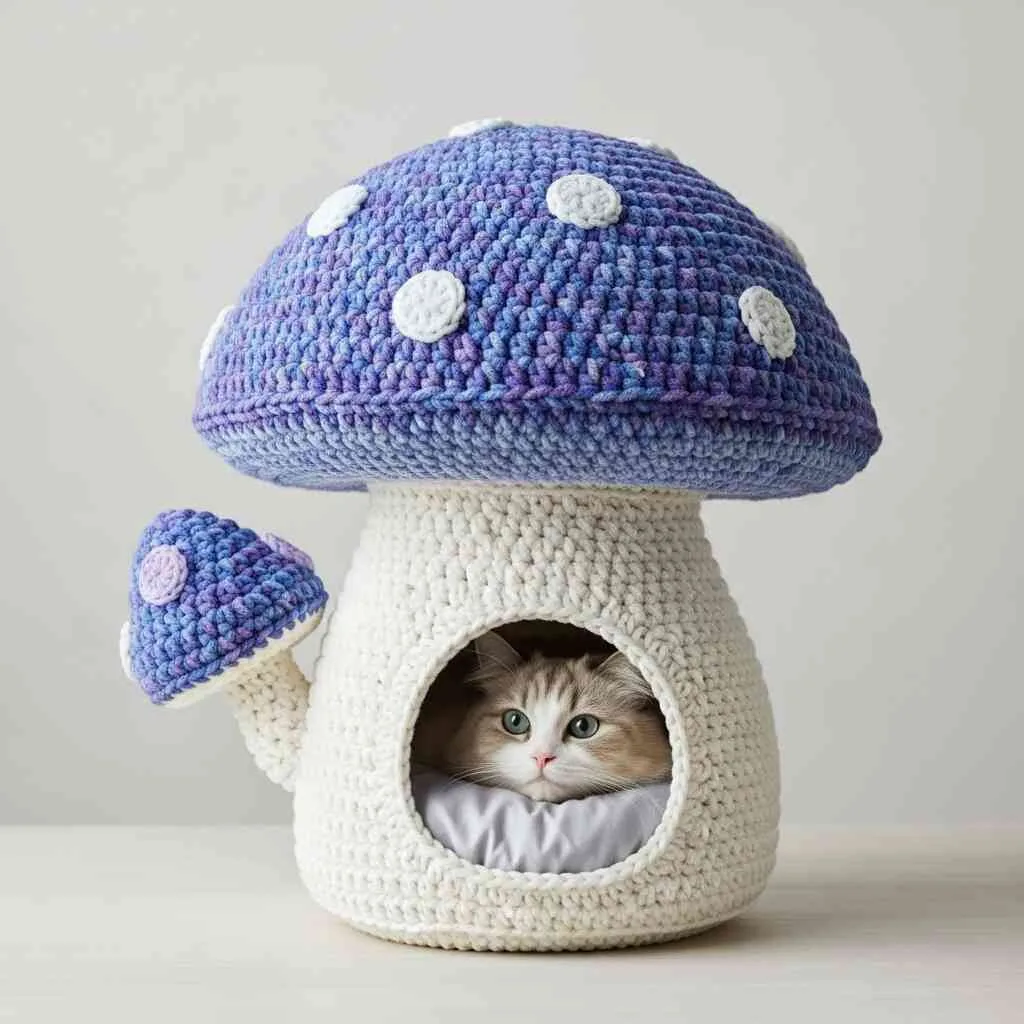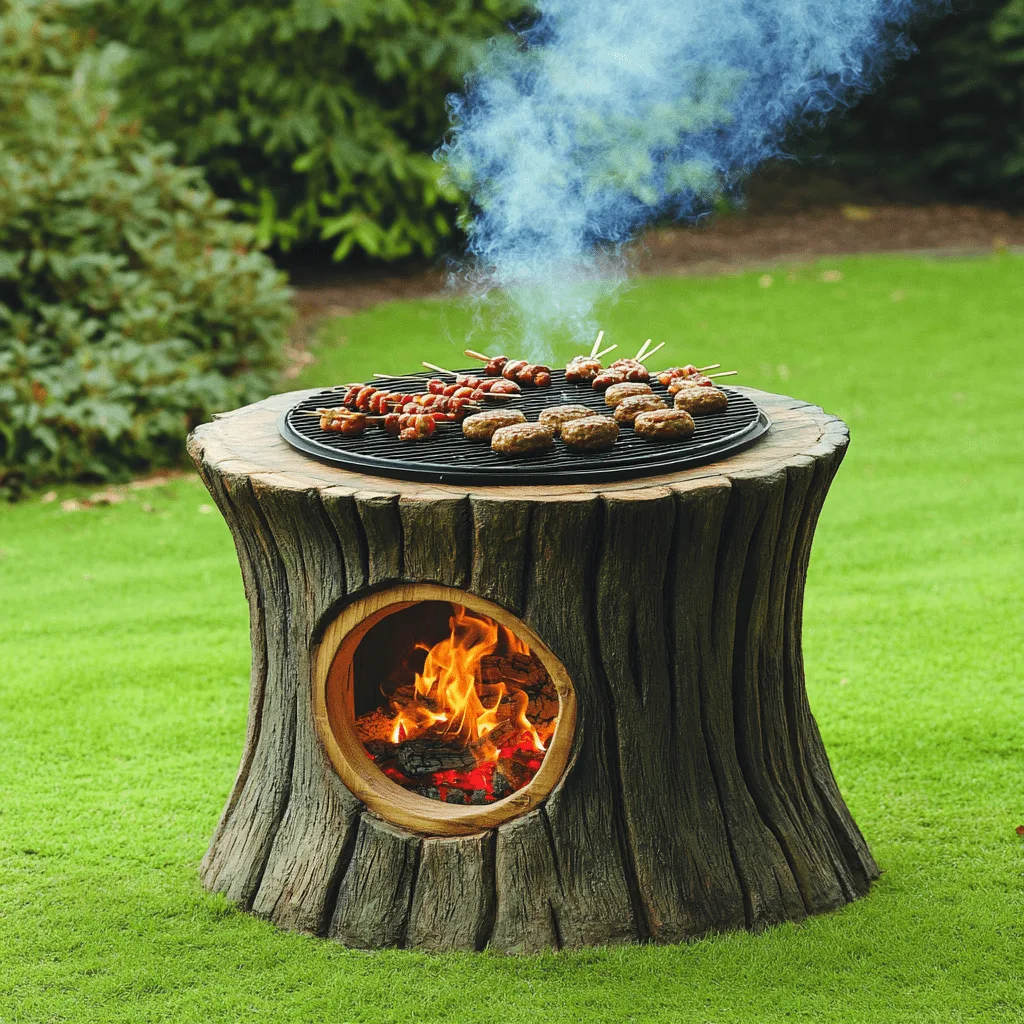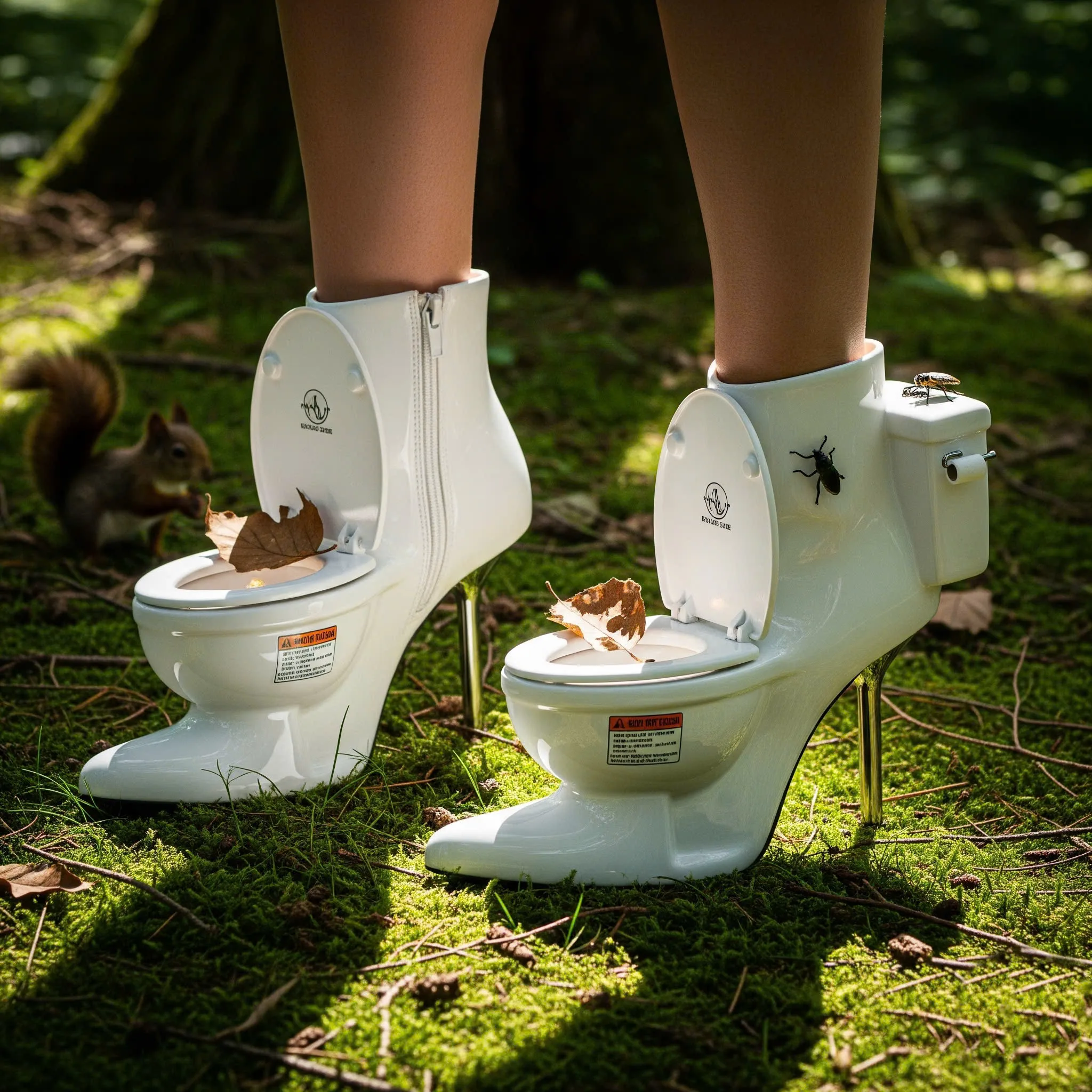Looking to add a touch of greenery to your kitchen? Kitchen terrariums are the perfect solution. These miniature gardens bring the beauty of nature right into your home, providing a convenient and stylish way to grow herbs and plants in even the smallest of spaces. With their compact design and easy maintenance, kitchen terrariums are a must-have for any aspiring chef or plant enthusiast.
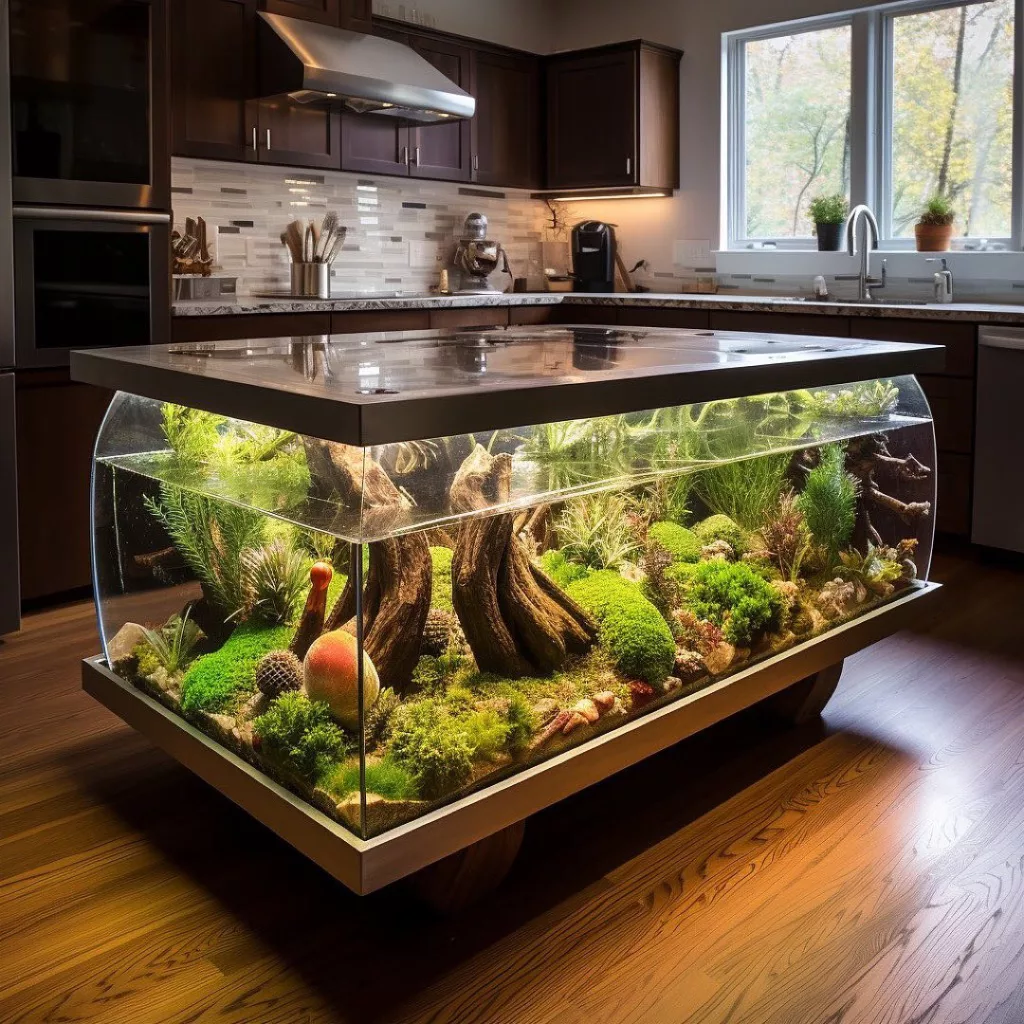
Not only do these terrariums serve as functional herb gardens, but they also double as eye-catching centerpieces for your kitchen. Picture this: a glass container filled with lush green foliage, nestled on your countertop or hanging from above. It’s not just about aesthetics either – having fresh herbs at your fingertips can elevate your culinary creations to new heights.
Ready to embark on your own Kitchen Terrarium 🌿🌱🍽️ journey? Get ready to embrace the beauty of nature inside and experience the joy of watching your herbs thrive in this unique indoor garden. Buckle up and let’s explore everything you need to know about creating and caring for a kitchen terrarium.
Contents
Choosing the Right Container for Your Kitchen Terrarium
Choosing the right container is essential. The container you select will not only impact the aesthetic appeal of your terrarium but also affect the growth and health of your plants. Here are some factors to consider when choosing a terrarium container.
Factors to Consider in Choosing a Terrarium Container
- Size and shape of the container should match your available space: Before selecting a container, assess the space where you plan to keep your kitchen terrarium. Ensure that the size and shape of the container fit well within that area without overcrowding or obstructing other items.
- Transparent containers allow for better visibility of plants: Opt for containers made from transparent materials such as glass or acrylic. These materials provide clear visibility, allowing you to admire your plants’ growth and enjoy their beauty.
- Consider the material and durability of the container: Choose a sturdy and durable material for your terrarium container, ensuring it can withstand any accidental bumps or falls. Glass containers are popular choices due to their durability and elegant appearance.
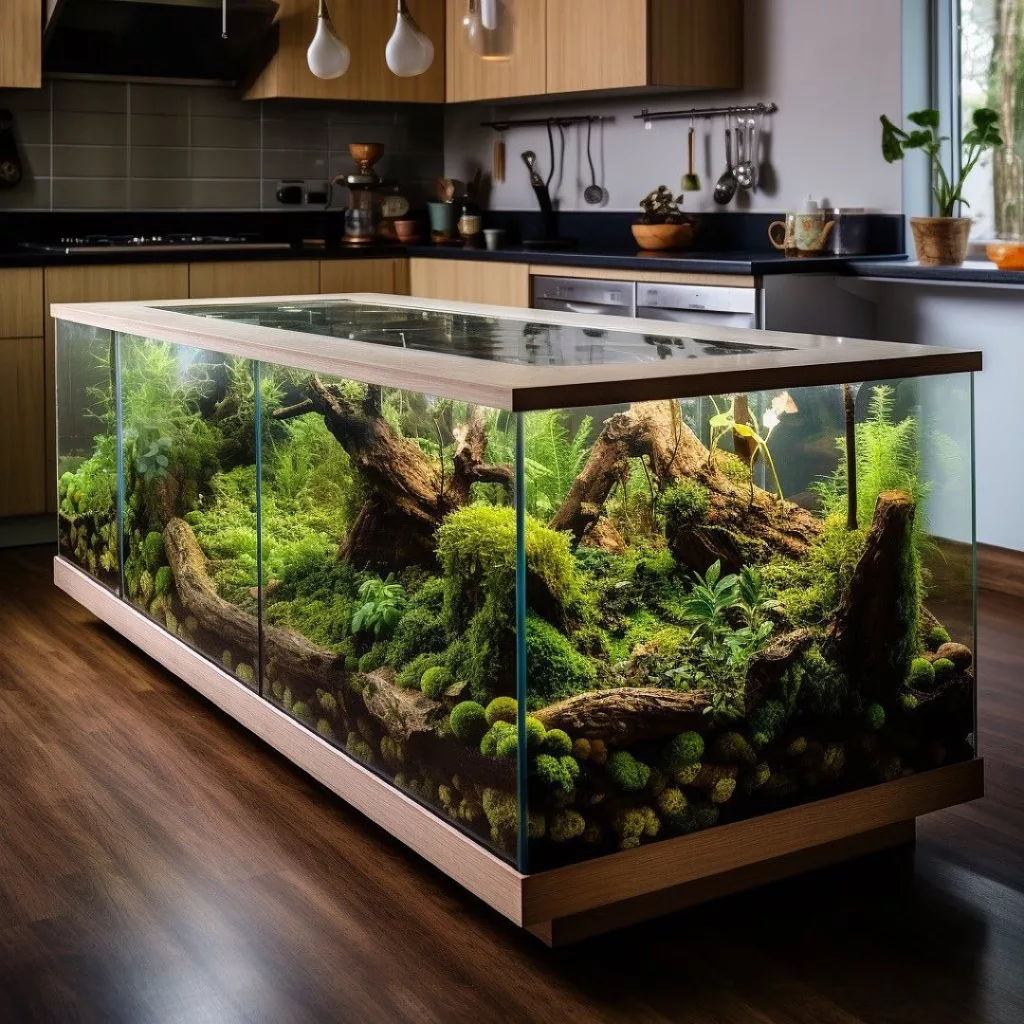
Recommended Types of Containers for Kitchen Terrariums
- Glass jars or fish tanks are popular choices for their transparency: Glass jars with removable lids or fish tanks make excellent options for kitchen terrariums. Their transparency allows ample light penetration while providing an unobstructed view of your mini garden.
- Hanging terrariums save counter space and add visual interest: If you have limited counter space in your kitchen, consider hanging terrariums. These suspended containers not only save valuable surface area but also create an eye-catching display that adds charm to your kitchen decor.
- Closed containers with lids help maintain humidity levels: Closed containers with lids create a more controlled environment by trapping moisture inside, which is beneficial for certain plant species that thrive in high humidity conditions like ferns and mosses.
Remember, the choice of container for your kitchen terrarium ultimately depends on your personal preferences and the specific requirements of the plants you intend to grow. Consider factors such as size, transparency, material, and functionality when making your decision.
Step-by-Step Guide on Making a Kitchen Terrarium
Now that you have gathered the materials and tools needed for your kitchen terrarium, it’s time to move on to the next steps.
Preparing the Container for Planting
Before you start planting your herbs, it’s important to ensure that your container is clean and ready. Give it a thorough cleaning to remove any dirt or residue that may be present. This will create a clean environment for your plants to thrive in.
Once your container is clean, it’s time to set up the base layers. Start by adding a layer of pebbles at the bottom of the container. This will aid in drainage and prevent waterlogging, which can be harmful to your plants’ roots.
Next, add a layer of activated charcoal on top of the pebbles. Activated charcoal acts as a natural filter, helping to purify the air inside the terrarium. It absorbs any impurities or odors, ensuring that your plants have fresh air to breathe.
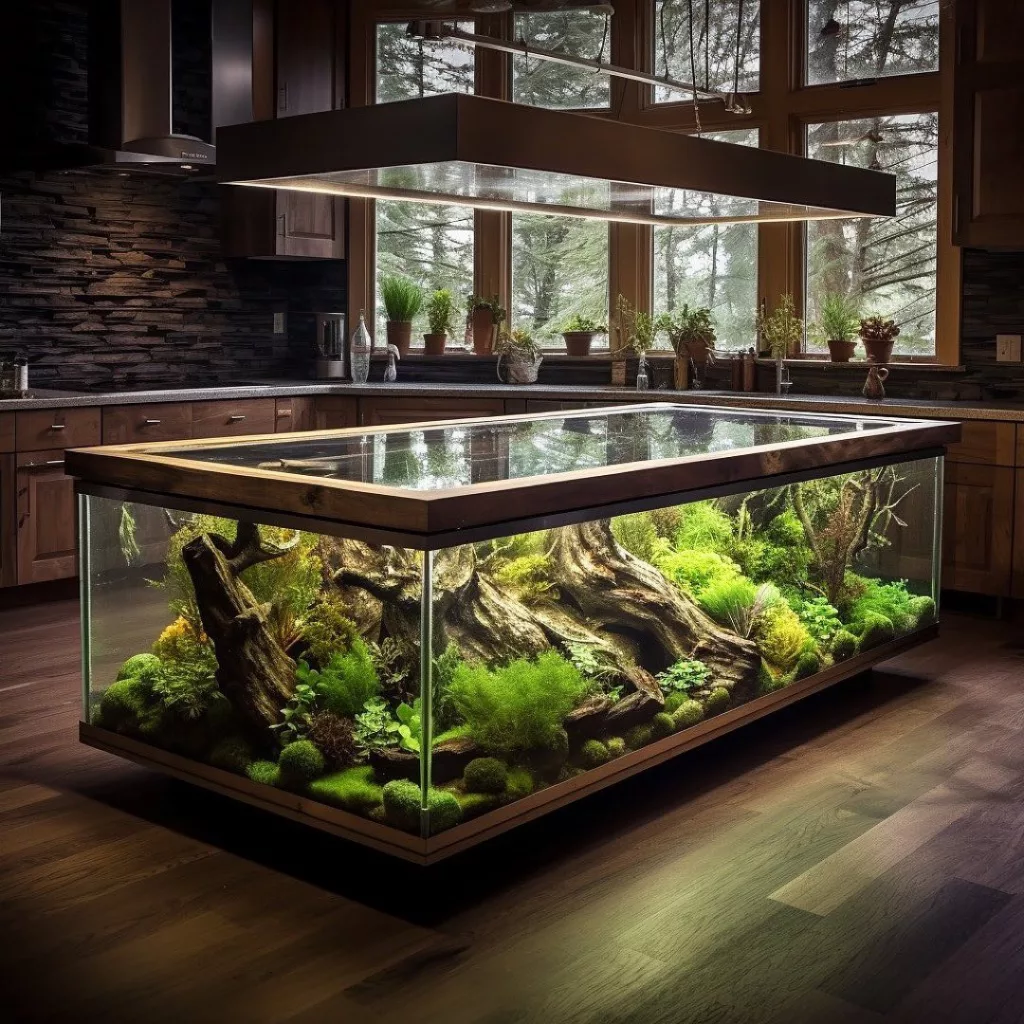
Selecting and Planting the Right Herbs for Your Kitchen Terrarium
Now comes the fun part – selecting and planting your herbs! When choosing herbs for your kitchen terrarium, opt for varieties that thrive in low-light conditions since they will be indoors. Mint and parsley are excellent choices as they can tolerate limited sunlight.
It’s also important to choose compact herb varieties that won’t outgrow the limited space within your terrarium. Look for dwarf or bushy varieties that stay small but still provide an abundance of flavor when used in cooking.
Ensure compatibility between selected herbs regarding their watering needs. Some herbs prefer drier soil while others require more moisture. It’s essential to group together herbs with similar watering requirements so that you can easily maintain them without causing stress or overwatering.
When planting your herbs, gently remove them from their nursery pots and loosen the roots slightly. Dig a small hole in the potting soil within your terrarium and carefully place the herb into it. Gently press the soil around the plant to secure it in place.
Remember to leave enough space between each herb to allow for growth and airflow. Overcrowding can lead to poor air circulation and increased risk of diseases or pests.
With these steps completed, you are well on your way to creating a beautiful kitchen terrarium filled with fresh herbs that you can use in your cooking. It’s time to give yourself a pat on the back for taking this initiative towards growing your own ingredients right in your kitchen!
Essential Care Tips for Your Kitchen Terrarium
Understanding the Watering Needs of Your Plants
To ensure the health and vitality of your kitchen terrarium, it’s important to understand the watering needs of your plants. Overwatering can lead to root rot, so it’s crucial to water sparingly. Before watering again, check the moisture levels by touching the soil. If it feels dry, it’s time to water. However, avoid direct watering on the leaves as this can cause damage or encourage fungal growth. Instead, aim at the soil surrounding the plants.
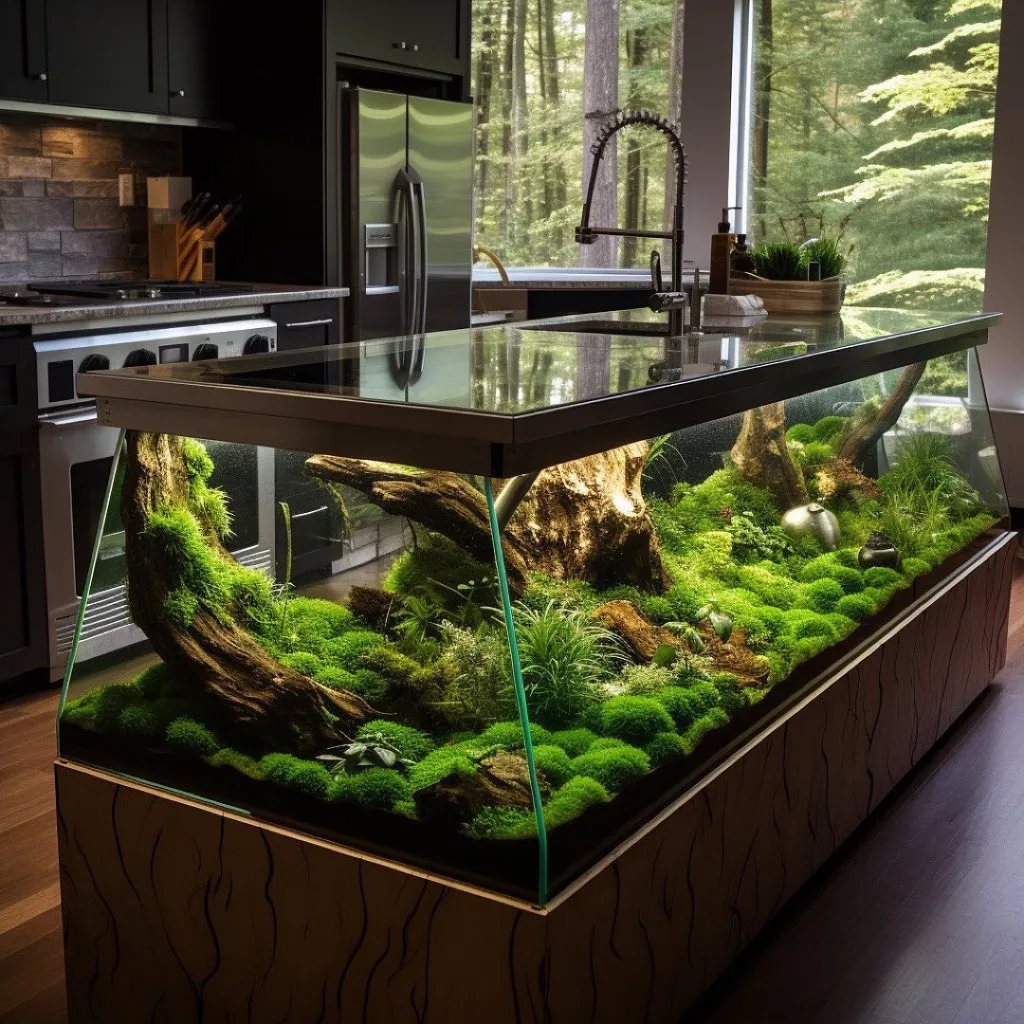
Fertilizing and Pruning Your Kitchen Terrarium Herbs
In addition to proper watering techniques, fertilizing and pruning are essential care practices for your kitchen terrarium herbs.
Fertilizing: Provide nutrients to your plants by using organic liquid fertilizers in small amounts. These fertilizers are gentle on your plants while promoting healthy growth. Be cautious not to over-fertilize as this can lead to nutrient burn or excessive growth that may overcrowd your terrarium.
Pruning: Regularly trim your herbs to maintain their shape and prevent overcrowding within the terrarium. Pruning also encourages bushier growth and ensures that each plant receives adequate light and airflow. Promptly remove any dead or yellowing leaves as they can attract pests or indicate underlying issues with plant health.
By following these care tips for your kitchen terrarium, you’ll create an environment where your herbs can thrive and flourish. Remember that each plant has its own specific needs, so observe how they respond over time and adjust accordingly.
Providing Adequate Light for Your Kitchen Terrarium
To ensure the success of your kitchen terrarium, it is crucial to provide adequate light for the herbs you are growing. Different herbs have varying lighting requirements, so it’s essential to understand their needs and create the ideal lighting conditions.
Determining Ideal Lighting Conditions for Different Herbs in a Kitchen Setting
Not all herbs are created equal. Some herbs thrive in bright, indirect light, while others can tolerate lower light levels. To determine the ideal lighting conditions for your kitchen terrarium, consider the following:
- Basil and rosemary: These herbs love sunlight and require at least 6-8 hours of direct or bright indirect light each day.
- Chives and thyme: These herbs are more adaptable and can tolerate lower light levels. They still need some natural light but can do well with around 4-6 hours of indirect or filtered sunlight.
Based on these differences, it’s important to adjust the location of your terrarium accordingly. Place basil and rosemary closer to windows that receive ample sunlight throughout the day. On the other hand, position chives and thyme in areas with slightly less direct sunlight.
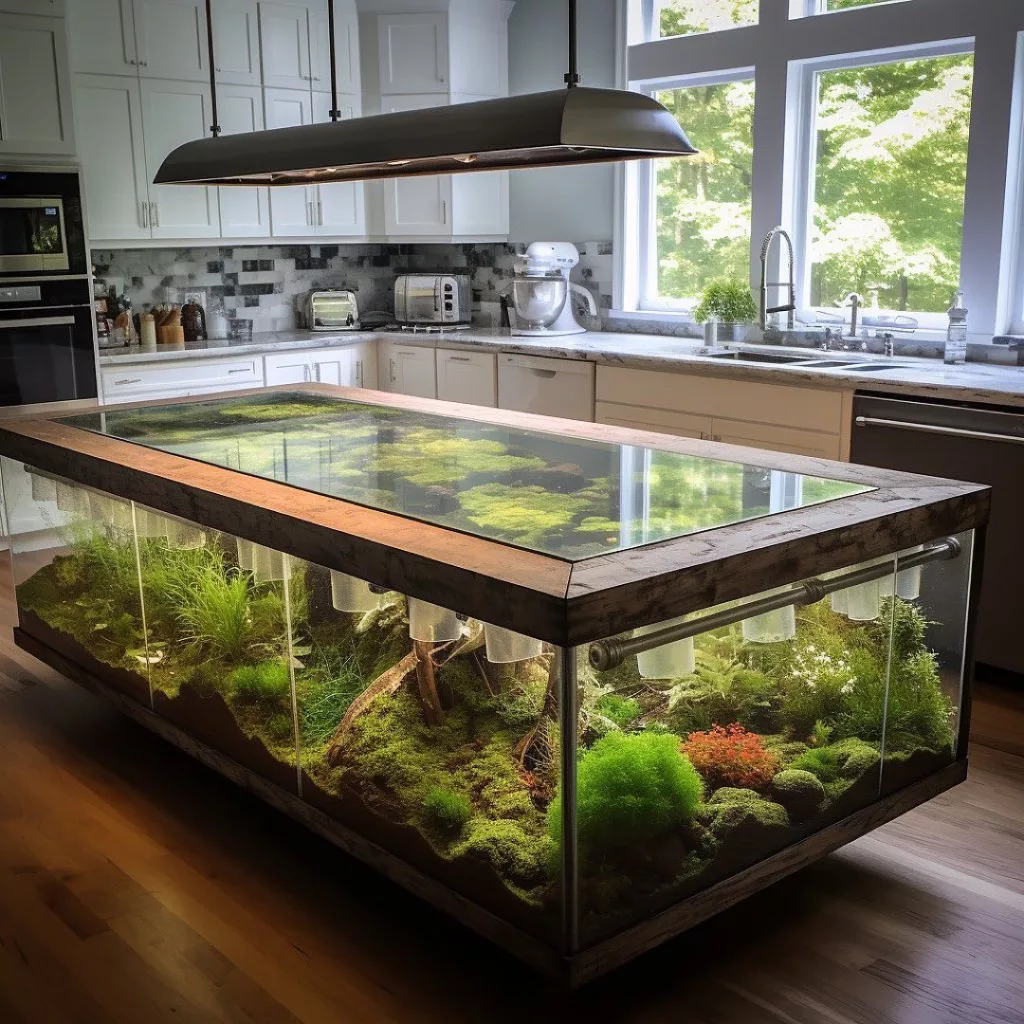
Bring the beauty of nature into your kitchen with the enchanting Kitchen Terrarium collection 🌿🌱🍽️. Elevate your cooking space with a touch of greenery, creating a harmonious blend of freshness and style. These charming terrariums not only add a natural touch to your kitchen but also create a soothing atmosphere. Don’t miss out on the chance to transform your cooking haven – click the icon below and explore the delightful range of Kitchen Terrariums to cultivate a green oasis in your culinary space!
Tips for Maximizing Natural Light and Supplementing with Artificial Lighting
While natural light is always preferred for plants’ growth, sometimes it may not be sufficient, especially during darker months or if your kitchen doesn’t receive much sunlight. In such cases, supplementing with artificial lighting becomes necessary. Here are some tips to maximize natural light and use artificial lighting effectively:
- Utilize natural light: Position your terrarium near a window that receives abundant natural light if possible. This will provide a good source of energy for your plants.
- Choose grow lights: Invest in grow lights specifically designed for indoor gardening to supplement insufficient natural light. LED grow lights are energy-efficient and emit the right spectrum of light needed for plant growth.
- Consider light distance: Ensure that the grow lights are placed at an appropriate distance from the plants. Too close, and they may burn the leaves; too far, and they won’t be effective. Follow the manufacturer’s guidelines or keep the lights about 6-12 inches away from your herbs.
- Adjust lighting duration: Most herbs require around 12-16 hours of light each day. Use a timer to automate the lighting schedule and ensure consistent exposure.
- Rotate your terrarium: If you have limited natural light sources, periodically rotate your terrarium to ensure all sides of the plants receive equal light exposure.
By maximizing natural light and supplementing with artificial lighting when necessary, you can create optimal conditions for your kitchen terrarium to thrive.
Remember, providing adequate light is crucial for healthy herb growth in your kitchen terrarium. Understanding each herb’s specific lighting requirements will help you create an environment where they can flourish. Whether it’s adjusting their location or using supplemental grow lights, ensuring proper lighting will contribute to successful indoor gardening.
Read more: Terrarium Coffee Tables: The Green Oasis Your Home Has Been Missing
Maintaining Optimal Humidity Levels in Your Kitchen Terrarium
Congratulations on completing the sections before the conclusion! You’re now well-equipped to create and care for your very own kitchen terrarium. But there’s one more essential aspect we need to cover – maintaining optimal humidity levels.
Proper humidity is crucial for the health and thriving of your plants. To ensure a moist environment, mist the terrarium with water every few days or as needed. Pay attention to any signs of excessive moisture or dryness, such as condensation on the glass or wilting leaves. Adjust accordingly by either reducing or increasing the frequency of misting.
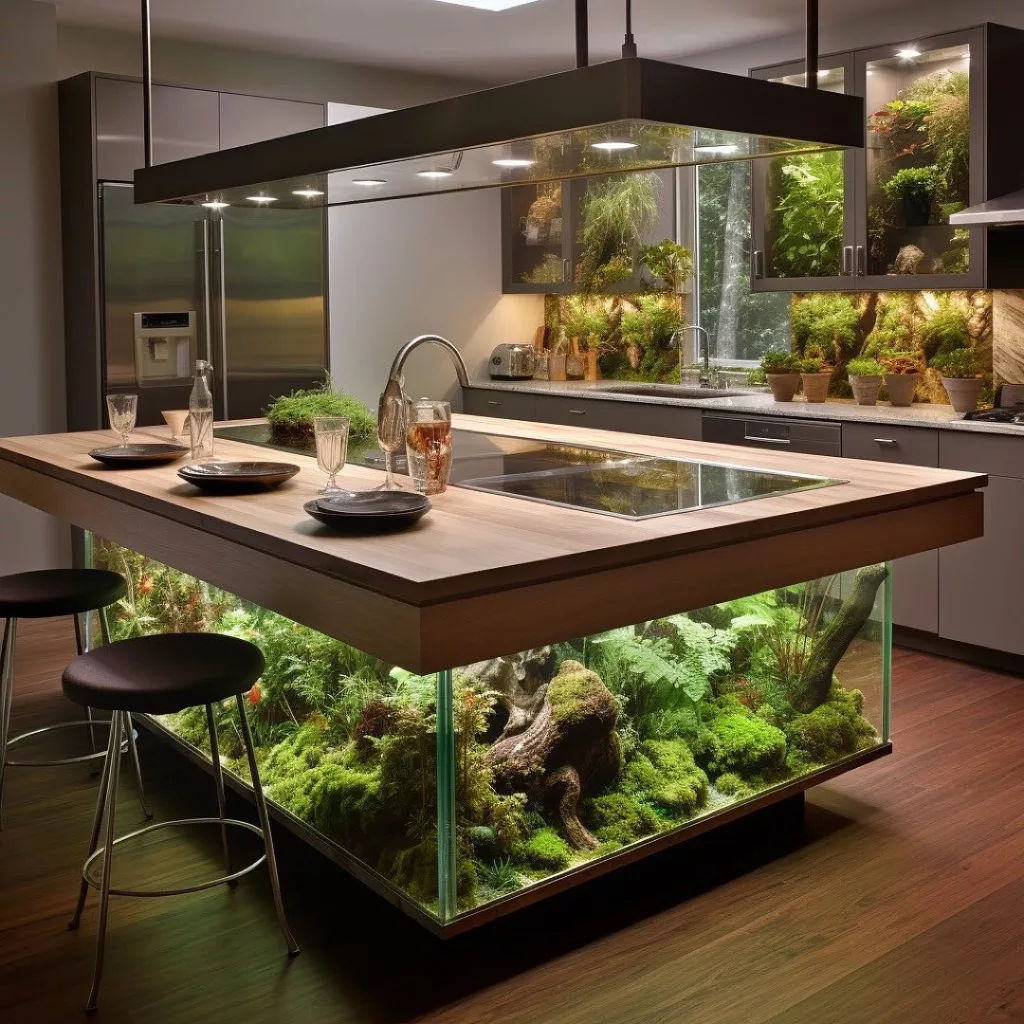
Now that you have all the knowledge and tools at your disposal, it’s time to embark on this exciting journey of creating a lush green oasis in your kitchen. Remember, caring for a terrarium is not just about nurturing plants; it’s an opportunity for personal growth and connection with nature. So roll up your sleeves, get creative, and let your imagination run wild!
If you encounter any challenges along the way, don’t hesitate to reach out for guidance from fellow terrarium enthusiasts or online communities. Share your progress, seek advice, and celebrate each milestone achieved. Remember that every small step counts towards creating something beautiful and unique.
So go ahead – embrace this new adventure with gratitude for nature’s wonders and an open heart ready to learn and grow. Your kitchen terrarium awaits its transformation into a vibrant ecosystem that will bring joy, tranquility, and a touch of natural beauty into your daily life.
Happy terrarium gardening!
FAQs
What is a kitchen terrarium?
A kitchen terrarium is a small, enclosed glass container that contains plants and serves as a mini indoor garden. It adds a touch of greenery to your kitchen while creating a beautiful and calming atmosphere.
How do I set up a kitchen terrarium?
Setting up a kitchen terrarium is easy! Start by choosing the right container, such as a glass jar or vase with an opening for air circulation. Add pebbles or activated charcoal at the bottom for drainage, followed by a layer of potting soil. Carefully place your chosen plants inside, making sure they have enough space to grow. Lastly, water your terrarium sparingly and place it in an area with indirect sunlight.
What are the benefits of having a kitchen terrarium?
Having a kitchen terrarium offers several benefits. Firstly, it improves indoor air quality by filtering out toxins and releasing oxygen. Secondly, it adds aesthetic appeal to your kitchen, creating a pleasant and inviting environment. Lastly, caring for plants in your terrarium can be therapeutic and reduce stress levels.
What types of plants are suitable for a kitchen terrarium?
There are various plant options that thrive in the humid environment of a kitchen terrarium. Some popular choices include ferns, mosses, succulents, air plants (Tillandsia), and small herbs like mint or basil. Choose plants that require similar light and moisture conditions for optimal growth.
How do I maintain my kitchen terrarium?
Maintaining your kitchen terrarium is relatively simple. Keep an eye on the moisture level by misting the plants occasionally or watering lightly when needed. Trim any dead leaves or overgrown parts to promote healthy growth. Ensure your terrarium receives enough indirect sunlight but avoid placing it directly under harsh rays.
Ready to bring some green into your cooking haven? Set up your own kitchen terrarium today and enjoy the beauty and freshness it adds to your culinary space!

